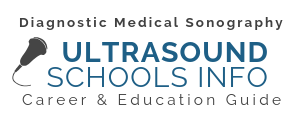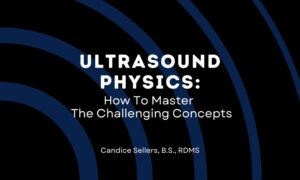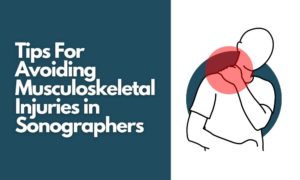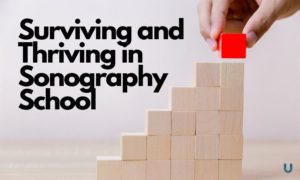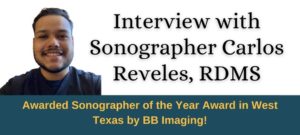Heather Christensen, PA-C, CSS is a Physician’s Assistant and graduate of Northeastern University. In her practice, she uses ultrasound to teach individuals how to exercise properly in order to resolve or prevent problems in their back and other parts of their body’s core.
Heather is the founder of UltrasoundCore.com and the creator of two Core Ultrasound exams. She was a presenter of Core Ultrasound at the 2017 SDMS conference in Orlando. She also created mommyready.com, a “unique home-based exercise program to help you identify postpartum problems and restore core-function from the inside out”.
USI: What inspired you to get into the field of healthcare?
HS: I decided to go into healthcare in High School. At first it was a love of science and watching my Dad who ran the laboratory at our local hospital. Anatomy and physiology came easy to me, it made sense, and it seemed like a good way to go, right! I definitely felt an urgency in High School to pick a career, and not waste any time in college. But, I also wanted to do something I’d love, so I tested it out my second semester of college by taking an EMT (emergency medical technician) course – which I loved! Then I continued working part-time/full-time through the rest of my undergrad gaining experience in Family Practice, Pediatrics, Urgent Care and Physical Therapy.
What I love most about medicine is working with a variety of people, listening to my patients, using my scientific skills to find solutions and help people live healthier, happier lives.
USI: How did you get to the point of becoming a physician assistant and what does this role involve?
HC: To become a Physician Assistant, I went through a Master’s program at Northeastern University in Boston. To get into a program you have to have work experience and a Bachelor’s degree with specific classes in science. My Bachelor’s was in Zoology which was essentially Pre-Medicine. PA (Physician Assistant) school is like cramming four years of med school into 2 years. It’s a lot of work. But as I see it, you get to continue learning the rest of your career. As a PA I work like a physician (I see patients, request testing, prescribe medications/treatment) but am required to work with a physician supervisor.
I have loved working with a variety of physicians and getting to learn from their experiences. I practice patient-centered, “evidence-based medicine” which you hear a lot these days. What it means is that I combine scientific research with my clinical experience and am able to tailor that individually to the specific needs of the person sitting in front of me.
USI: How and why did you get involved with Core Ultrasound Training?
HC: Core Ultrasound was developed as a tool to help answer the question, “How can we prevent chronic back pain/injury?” I tackled this topic as I was running an occupational health clinic and seeing that back pain/injury was our top healthcare expense both in lost productivity as well as disability and poor quality of life for a person with back pain. And after feeling somewhat discouraged as I had a patient who retired early on disability due to back pain and there was very little I could do to help him at this point, but seeing a young man walk into my office starting on the same career path and thinking – I want to do everything I can to see that this young man doesn’t end up the same.
Because of my background in Physical Therapy where I worked in a clinic that specialized in back injury, I sought out my local physical therapist for suggestions to teach my patients core strengthening exercises. This Physical Therapist, Greg Fritz, PT, happened to be one of three PT’s who was certified in musculoskeletal ultrasound, and he showed me how to look at the abdominal wall muscles with ultrasound.
It was like my eyes were finally opened and I could see what the problem was! I asked him for more information, and he gave me a stack of research articles and I started looking up more on my own.
As I combined the research with my understanding of physiology, I recognized that core dysfunction was something that preceded chronic back pain and included various common symptoms that could be recognized even before someone’s back pain became persistent.
Symptoms of core dysfunction include recurring back pain, rectus diastasis, leaking urine, gas or stool, abdominal weakness, poor posture, poor balance, pelvic pain, muscle spasm, pelvic organ prolapse and more. A few triggers for core dysfunction include any abdominal surgery (such as a c-section, appendectomy, cholecystectomy or hernia repair), motor vehicle accidents, back pain lasting two weeks or more, and childbirth.
USI: Why ultrasound as opposed to another imaging modality?
HC: Ultrasound is the only tool we have where you can see not just the structure (morphology) of the muscles, but the function as well. This is because ultrasound shows how things are moving in real-time. No other modality, CT, MRI, etc. can do that. When I look at someone’s core, I see how their muscles look and how they are working when the person does exercises.
With Core Ultrasound we want to know if the Core System is working correctly, and if not, we can show a person how to do their exercises correctly. (Like have you tried a kegel lately? Do you know you are doing it correctly?) When someone sees on ultrasound how to correctly contract these deep core muscles, in just a couple minutes they learn to do their exercises correctly – and then they see results.
The majority of “failures” of conservative therapy (which is exercise vs. surgery) is because people aren’t doing their exercises correctly – even when they think they are. If you’re not seeing the results, you aren’t doing the exercise correctly – or there is a surgical issue such as a detached muscle, but that’s only in 7 to 10% of cases. The majority of people should see results (improvement or a resolution of their symptoms of core dysfunction) with exercise alone.
USI: What’s one standout success story where core dysfunction has been
identified thanks to Core Ultrasound?
HC: To respect the privacy of my clients, I’d probably just share my own experience. I have four children; my first was a c-section, the last three were vaginal deliveries. I’ve always been very active and had a strong core pre-pregnancy from doing the exercises I was teaching in physical therapy. But after my deliveries it was different. I was weaker – I just kept saying how surprised I was that I had lost so much muscle mass during pregnancy (even though I had stayed active). I had the bulgy belly and weak abs, though I resumed doing the same exercises I was doing before – I just wasn’t seeing the results.
Of course as a busy mom, I reasoned that I just wasn’t being consistent enough or working hard enough at it. I ran a marathon after my second, and I taught my kids how to snow ski (which essentially is holding a wiggly two or three-year-old in a squat position going down the slope for three to four hours), but I could also tell my body wasn’t keeping up.
After my third baby I started having incontinence (leaking urine). My doctor told me I had to use a pessary or have surgery. What! I was only 34, not an old lady! Neither option sounded good to me.
Just over a year later I got a peek at part of my core system with ultrasound and had my first realization of what could really be the problem. I started restoring my core system, then got pregnant and delivered my fourth baby. By that time, I had a plan and started putting myself through a program to restore my core dysfunction. [My core dysfunction symptoms] included recurring back pain and pelvic/spinal instability…stress incontinence, a good sized rectus diastasis (~4 cm), unilateral pelvic floor dysfunction (from three perineal tears resulting in loss of sensation and muscle function on one side), poor balance and now poor posture (with nothing to hold me up), abdominal weakness and not getting results in my previous exercise attempts. It sounds like a lot – but until the incontinence, I didn’t feel like a wreck. Actually, I considered myself healthy, and putting up with some bothersome symptoms seemed a small price to pay for bringing four amazing souls into the world.
When the incontinence stopped me from running or jumping on the trampoline, [and I started having] back pain–that was the [last] straw! I have four boys. I want to be able to ski and backpack and keep up with them – and I knew it’s only going to get harder! Giving up was not an option.
My baby is now two years old, and my back hasn’t gone out of alignment in almost one year, my diastasis is healed, I have no incontinence. I am stronger, and can see the results of my exercise – I am working on my full arm balance in yoga! I have more energy, less muscle tiredness, and I understand what I need to do to prevent injury. Our bodies were made to bend, lift, run, jump, twist and have children (if you’re a woman). When your core is working properly, all these things can be done safely.
USI: You also founded Mommy Ready? What’s that?

Take care of yourself during pregnancy by getting moderate exercise.
HC: Mommy Ready is an online exercise program for women to use to help restore their core function after childbirth and prevent persisting problems, or for those already with symptoms of core dysfunction to help resolve them through restoring core function.
Mommy Ready was developed during my postpartum experience, which was intentional, so I wouldn’t forget what it was like exactly to be going through that postpartum period. I recognized the usefulness of restoring core function the week after I was introduced to Core Ultrasound. I had back-injury prevention on my mind (thinking of the laborers, mostly men), and that week I had three women come into my clinic complaining of various symptoms that all related back to their last pregnancy. I realized that these women needed core restoration too, and childbirth seemed to be the trigger for them, just like it had been for me.
Mommy Ready was my way of getting this information out to more people than just those that I could see in my practice. It can be customized by a Core System Specialist, a medical provider trained in Core Ultrasound, to fit an individual patient’s needs. What we’ve seen is that with the right instruction and support, and ultrasound biofeedback for those who need it, 50 to 80% of women can restore core function. That’s incredible compared to only 30% of women who are recovering properly after childbirth on their own.
USI: Is there anything you would like to add?
HC: Thank you for your interest! Core Ultrasound has changed my practice. It is a tool that allows me to find the underlying cause of common symptoms and actually correct them, whether it’s through exercise alone or if needed, surgery. So many people can benefit from this. If we can get more physicians – OB/GYN, surgeons, primary care, orthopedics and physical therapists – to incorporate this into their practice (either via themselves using it as point-of-care ultrasound or by hiring trained ultrasonographers) we will really start to help people stay active and live healthier lives, without the burden of back pain and disability.
The best part for providers and sonographers is that these ultrasound exams are easy to learn, and can be a great introduction to using ultrasound for those of us who were hesitant to distinguish the black and white blurs on the screen as something with clinical significance. Especially if you are a sonographer who is experiencing pain, look into checking out your own Core System. Add this to your ergonomics and you’ll have a long, healthy career! You can learn more on my websites at www.ultrasoundcore.com and www.mommyready.com.
